The rarest turtle species in the world
The world’s rarest turtles are difficult to find and frequently housed in zoos, while other organizations are also rearing these turtles in captivity.
To repopulate their species, certain bred species are being returned to the wild. Like the Albino sliders after this article, other animals are being developed specifically to be sold as pets.
One of the most identifiable animals on the earth is the turtle. They are simple to recognize because of their shells. These species are renowned for their lifespan and are frequently portrayed as gentle.
Numerous turtle species can make wonderful pets because they are friendly and fascinating creatures to keep. The turtle may live a long life, and some species even outlive other pets.
This list only scratches the surface of the world’s rarest turtles.
- Roti Island Turtle
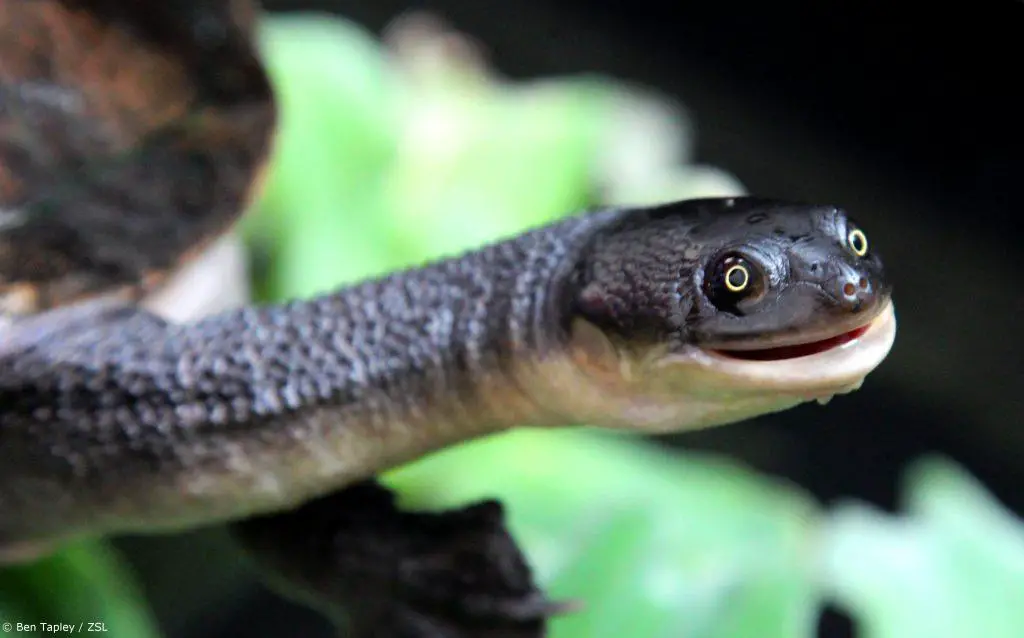
Image credits: www.edgeofexistence.org
Estimated Population: N/A
Location: Indonesia
Conservation Status: Critically Endangered
Binomial Name: Chelodina mccordi
The snake-necked turtle of Roti Island is unique to the Indonesian island of Rote. Its ancestors include the well-known New Guinea Snake-necked turtle, but since 1994, it has existed as a separate species.
The 10-inch-long Roti Island turtle is a freshwater species that inhabit tiny lakes.
This species’ declining population led to its inclusion on the IUCN Red List in 2018. The turtle is one of the most sought-after turtles in the world market, but the fact that it is a critically endangered species hasn’t stopped people from capturing it illegally. There are only three remaining populations in a 27-square-mile area.
Normally, hatchlings grow a 25.5 mm long carapace after four months of incubation.
A juvenile C. mccordi might have three growth rings (annuli) per scute in its natural environment. Such annuli are missing in adults due to weathering, making them useless age markers in older turtles.
The skull and jaw of C. mccordi show little morphological differences from those of other snake-necked turtles, which is supposed to imply that this species is a generalist carnivore or piscivore. insects, small fish, and tadpoles are its primary diet.
- Red Crowned Roofed Turtle
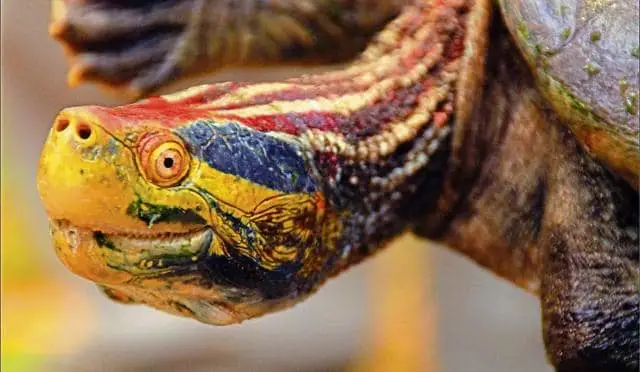
Image credits: Sunyaias-resources.
Estimated Population: Around 500
Location: India
Conservation Status: Critically Endangered
Binomial Name: Batagur kachuga
One of 24 endemic turtle species in India, the Red-Crowned Roofed Turtle is recognized by its vivid red, yellow, or blue facial characteristics. The species was once native to Bangladesh, but it may have gone extinct there. The females can reach a height of 22 inches, although the males are smaller. Only male turtles during the breeding season commonly have vivid red and yellow on their heads.
Due to the recent population reduction, this turtle was added to the IUCN Red List of Threatened Species in 2018. They are regarded as India’s most endangered turtles.
The shell of a red-crowned roofed turtle may be up to 25 kg and 56 cm long. Males hardly reach half the length of females, which is a difference in length. It features a head that is around the regular size and a tilted, somewhat projecting snout. The species’ juveniles have a heavily keeled carapace and a laterally angulated plastron.
It is a particular kind of freshwater turtle that eggs on the ground in fast-moving rivers.
The species’ sole food source is aquatic plants. Between March and April, adult females lay between 11 and 30 eggs.
- Painted Terrapin
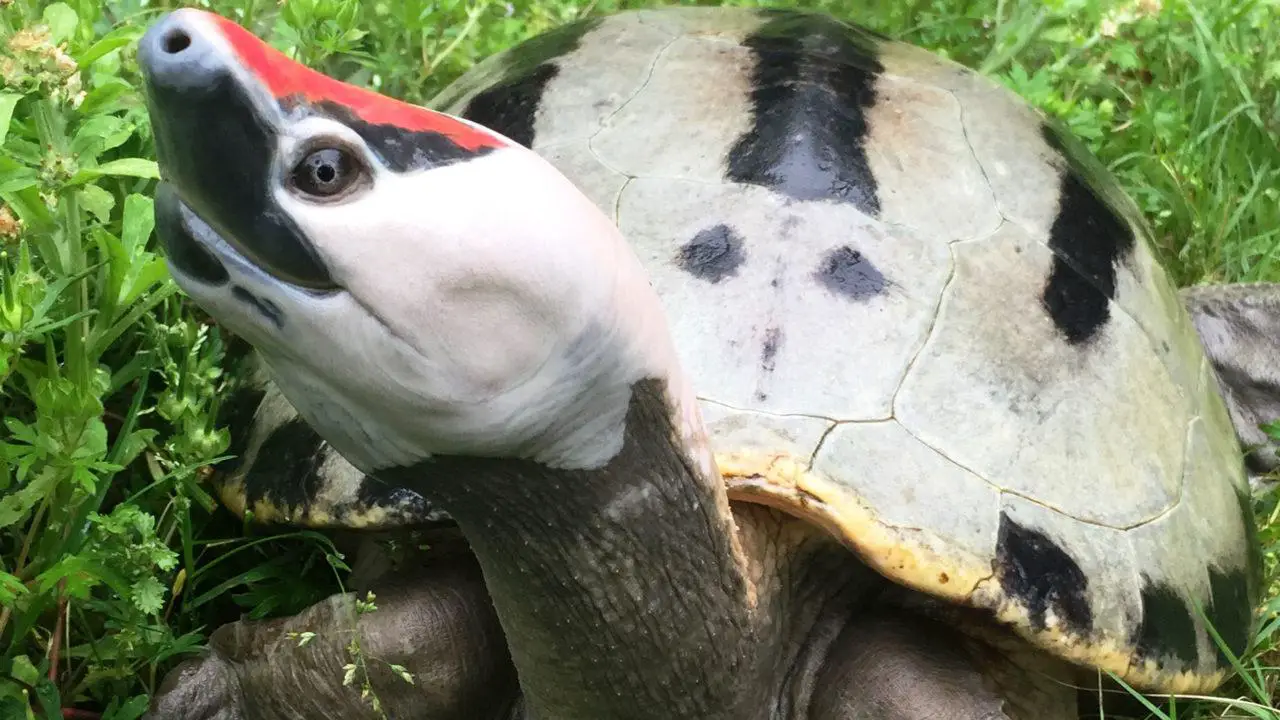
Image credits Pcdn.co
Estimated Population: Around 400
Location: Brunei, Indonesia, Thailand, Malaysia
Conservation Status: Critically Endangered
Binomial Name: Batagur borneoensis
The breeding seasons are when Painted. Compared to female-painted terrapins, males are larger and more colorful. For the majority of the year, males and females have unappealing brown and grey shells with continuous or broken black stripes or spots on their carapace. They receive their name from the colors they have during the breeding season. During the summer and winter mating seasons, males’ heads become white with a red stripe running along the top, between their eyes. Their shells also have a whiter or lighter gray appearance, highlighting their stripes. Males and females also experience color changes, with males seeing a more prominent reddening of the head.
Southeast Asia is home to several freshwater and rainforest habitats for painted terrapins.
The World’s Most 25 Endangered Freshwater Species list for 2011 listed terrapins as one of the species with less than 400 left. The females, also referred to as saw-jawed turtles, can grow to 20 to 28 inches. They have an 80-year lifespan.
Plant life, including water plants and grasses, decomposing leaves, fruit, and occasionally tiny aquatic critters, make up the majority of what painted terrapins eat. The majority of the food consumed by painted terrapins is composed of fruits and vegetables in various slices.
- Dahl’s Toad-Headed Turtle
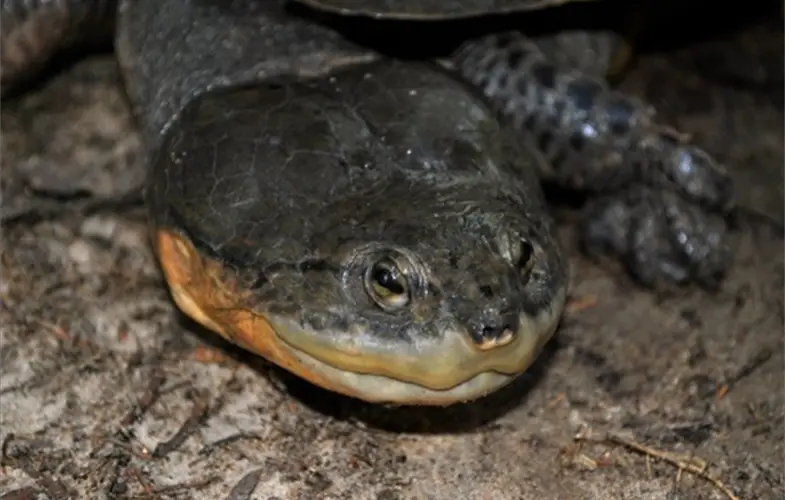
Image credits Newsroom.wcs.org
Estimated Population: Around 300
Location: Colombia
Conservation Status: Critically Endangered
Binomial Name: Mesoclemmys dahli
The medium-sized Dahl’s Toad-Headed turtle is unique to Colombia. Although it spends its time on land, this species inhabits freshwater ponds, streams, and swamps. There are only about 300 left, and they are scattered among smaller groupings.
The oval to the elliptical carapace of the M. dahli may grow up to 22.9 cm in length and is widest behind the center. Its colors range from brown to olive. The back edge has a number of serrations. The dorsal surface has significantly flattened, and the lateral marginals have been pushed forward. Vertebral keels may not have fully developed in all toddlers and adults. The largest and most elongated of the five flared vertebrae are the first and fifth. The fourth and smallest vertebra in the series, as well as the second and third, are frequently longer than they are wide. The cervical scute is frequently wider than it is long.
Due to the degradation of dry forests and their habitat, the environment of the toad-headed turtle has been at risk for a very long time. This turtle has been classified as severely endangered on the IUCN Red List of Threatened Species since 1996. To survive, turtles have adapted to several environmental factors.
They devour fish, amphibians, snails, and other aquatic invertebrates in addition to meat from other carnivorous animals the diet of Dahl’s Toad-Headed turtle.
- Yellow-Headed Box Turtle
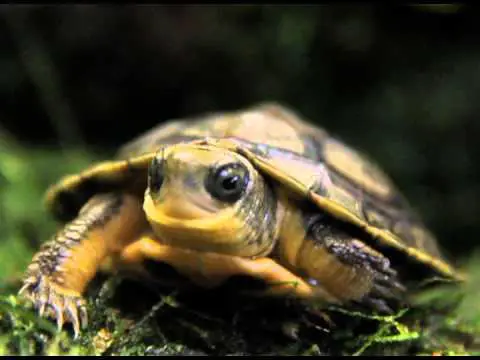
Image credits I.ytimg.com
Estimated Population: Less than 150
Location: China
Conservation Status: Critically Endangered
Binomial Name: Cuora aurocapitata
yellow-Headed Province Anhui in East China is the only place where box turtles may be found. Though some researchers believe only about 150 adult members of the species are alive, it is regarded as functionally extinct. Box turtles are typically confined to the clear, swiftly moving streams where they reside.
Despite being placed on the IUCN Red List in 2000, this turtle species’ population hasn’t grown. Overexploitation for the pet and food industries is a major threat to the species. They are also smaller in size because males may grow up to 8 inches in length and females can only reach a maximum of 5 inches.
The box turtle closes its plastron using a simple system of front and end hinges. This locking technique is quite effective against natural enemies despite not being very effective against people. Due to intensive “harvesting” for the food and pharmaceutical sectors, it is in grave danger.
- Sulawesi Forest Turtle
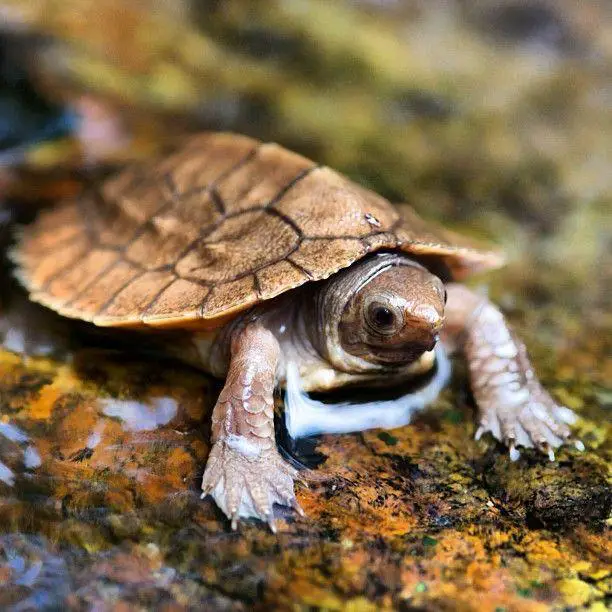
Image credits I.pinimg.com
Estimated Population: Less than 100
Location: Indonesia
Conservation Status: Critically Endangered
Binomial Name: Leucocephalon yuwonoi
One of Indonesia’s four Greater Sunda Islands, Sulawesi, is home to the Sulawesi Forest Turtle. It measures 11 inches long, and while males have brown heads, females have white-yellow ones. During breeding seasons, females only lay one to two eggs, which contributes to their declining status.
The freshwater lakes and wetlands in the Sulawesi mountains are home to turtles. In the past ten years, Sulawesi turtles have successfully hatched three times at Riverview Park & Zoo in Ontario, Canada.
Despite ongoing efforts to boost the population, this species has been listed as endangered by the IUCN since 2018.
One of Indonesia’s four Greater Sunda Islands, Sulawesi, is home to the Sulawesi Forest Turtle. It measures 11 inches long, and while males have brown heads, females have white-yellow ones. During breeding seasons, females only lay one to two eggs, which contributes to their declining status.
The freshwater lakes and wetlands in the Sulawesi mountains are home to turtles. In the past ten years, Sulawesi turtles have successfully hatched three times at Riverview Park & Zoo in Ontario, Canada.
Despite ongoing efforts to boost the population, this species has been listed as endangered by the IUCN since 2018.
Melon, strawberries, kiwis, peaches, plum grapes, papayas, mangoes, and other fruits are included in the fruit combination that this turtle consumes. The list of ingredients also includes weeds, phony turtle pellets, and scent in addition to the kale and romaine lettuce.
- Northern River Terrapin
-
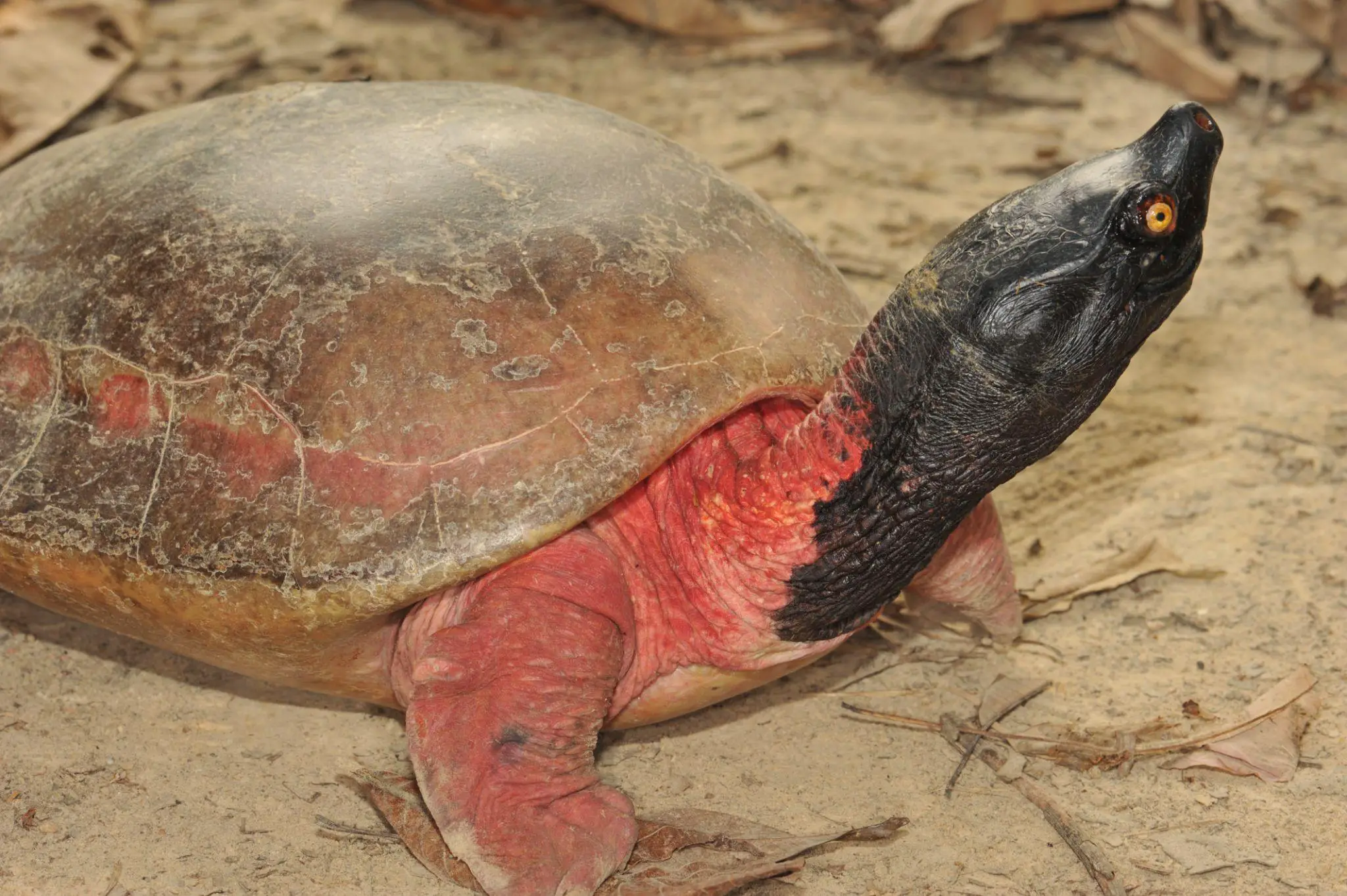
Image credits: IUCN
Estimated Population: Less than 100
Location: Bangladesh, India, Myanmar
Conservation Status: Critically Endangered
Binomial Name: Batagur baska
Male Sulawesi forest turtles may grow up to 28 cm in length, making them usually larger than females (9.4 in). Women have a brown-toned head, whereas men have one that is white-yellow in hue. As a result, men and women have different sexual needs. In Latin, leucocephalon means “white head.”
With a length of up to 24 inches, the Northern River Terrapin is one of Asia’s biggest turtles. It has olive-brown legs and a huge, depressed shell. The trafficking of the last survivors in Indian fish markets, which hastens their extinction, is a serious issue for the species.
Less than 100 River Terrapins were counted on the IUCN Red List of Threatened Species in 2014, however, the number has steadily declined. The species hunts for food among small animals and plants in freshwater settings. It has a 25-year lifespan and typically lays 10 to 40 eggs during the breeding season.
- Western Swamp Turtle
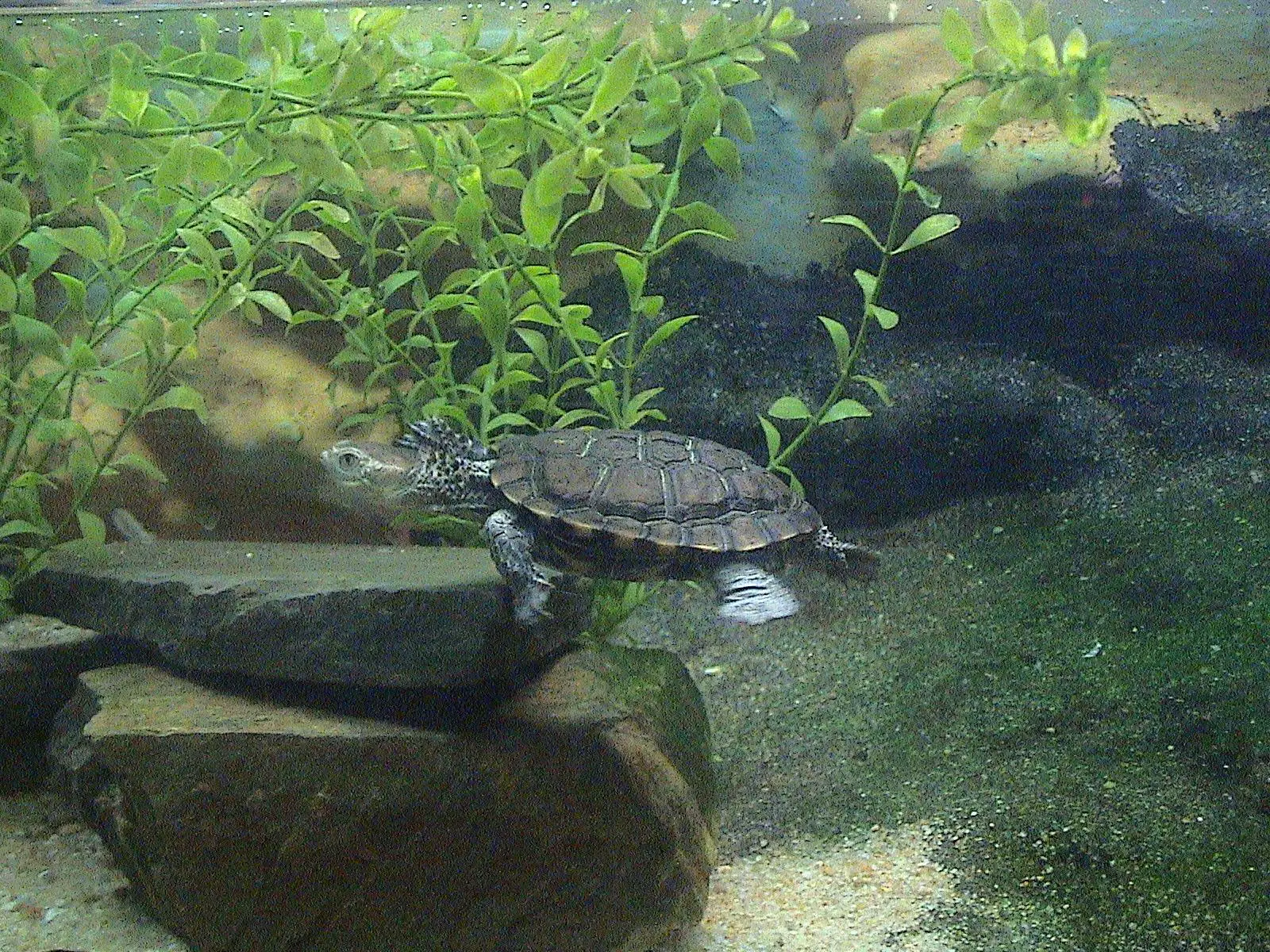
Image credits wikipedia
Estimated Population: Around 50
Location: Australia
Conservation Status: Critically Endangered
Binomial Name: Pseudemydura umbrina
The Western Swamp Turtle, which is about 6 inches in length, may be the tiniest turtle on our list. The rarest Australian reptile is this short-necked turtle, which is unique to Western Australia. It is the only Pseudemydura family member to have a limited population.
However, given that there are now just 50 adults left, this may soon alter. Since 1996, the IUCN Red List has listed the swamp turtle as a severely endangered species. Red foxes are their principal predators, although decreased rainfall and groundwater extraction also contribute to their declining population.
Western Marsh Swamps, where turtles reside, only get larger in the winter and spring. The tortoises swim across the water of the wetlands, eating tadpoles, frogs, and other small aquatic creatures. The wetlands aestivate or hibernate, for the duration of the summer in tunnels dug into the ground or cloaked in a thick layer of leaf litter.
Western Marsh Carnivorous tortoises eat small invertebrates.
- Vietnamese Pond Turtle
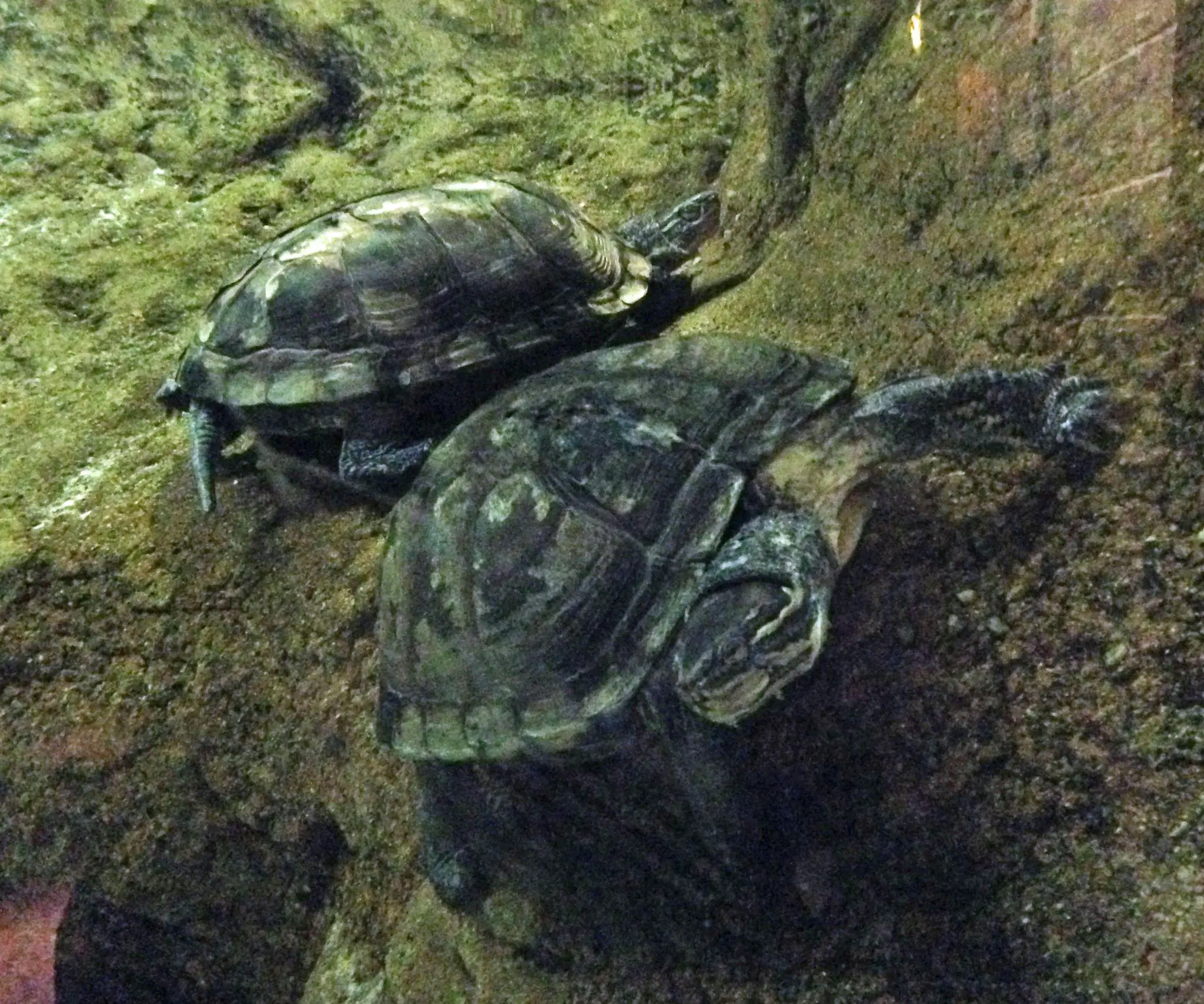
Image credits wikimedia.org
Estimated Population: Less than 50
Location: Vietnam
Conservation Status: Critically Endangered
Binomial Name: Mauremys annamensis
The Vietnamese Pond turtle is a species that is practically never found in the wild since it is bred in captivity under well-controlled conditions. Experts worry that they will become extinct with less than 50 individuals. Pond turtles can reach a length of 8 inches and are easily identified by the yellow stripes running down their heads.
Since 2018, pond turtles have been classified as severely endangered by the IUCN Red List. However, the struggle to maintain their status has lasted much longer. The remaining individuals take advantage of the warm water by consuming captive insects, crayfish, and snails.
They are omnivorous turtles. The only vegetation that is appropriate for the ecosystem, roaming insects, snails, crayfish, and feed from hanging aquatic turtles are normally their favored diets.
This turtle seems to be able to adapt to many aquatic environments when grown in captivity. As long as the water is warm (78 to 80° F), well-filtered, and aerated, pH seems to be less of an issue. Since anamnesis prefers sunbathing and some males may be violent against other males and unreceptive females, give them large cages loaded with driftwood and heaps of slate.
- The Yangtze Turtle
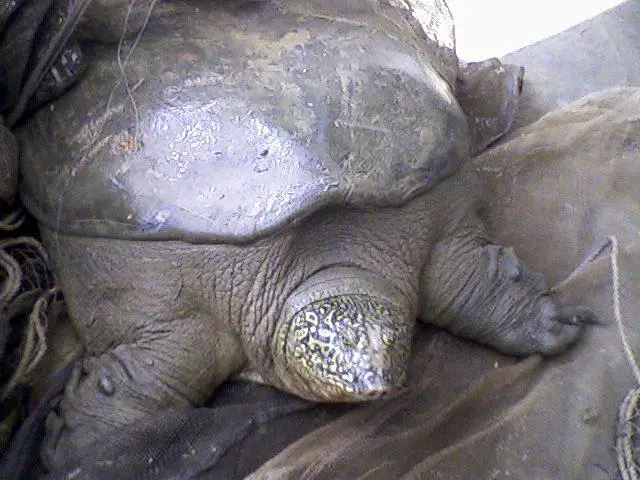
Image credits wikimedia.org
Estimated Population: Two
Location: China/Vietnam
Conservation Status: Critically Endangered
Binomial Name: Rafetus swinhoei
With only two remaining adult specimens, the Yangtze Giant Softshell Turtle, also known as the Red River and Shanghai Turtle, is the rarest turtle in existence. One turtle lives in China, and the other is in the wilds of Vietnam. They consume various plants, fish, snails, and frogs.
This enormous softshell has a high set of eyes, a pig-like snout, and a deep head under its shell. These turtles can spend a very long time in their home, which is deep underwater.
Since 2018, the two remaining turtles have been listed as critically endangered on the IUCN Red List of Threatened Species.The Yangtze enormous softshell turtle sometimes referred to as the red river turtle, is the largest species of freshwater turtle in the world. They might grow to a size of nearly 39 by 28 inches and 275 pounds.
On their gray bodies, these turtles exhibit markings that are either yellow or light gray. They are referred to as “soft-shelled animals” because their shells are made of leathery skin rather than horny scutes.
According to the contents of their stomachs, Yangtze giant softshell turtles eat a variety of foods, including fish, crabs, snails, water hyacinths, frogs, and green rice leaves. These turtles steadily grow during their lifetimes, which can reach 100 years.
Juveniles and eggs have relatively low survival rates compared to subadults and adults, which have substantially higher survival rates.
To explore more about turtles visit our website reptileszilla
Conclusion
The rarest species of turtles in the world are the Roti island turtle, Red-crowned roofed turtle, Painted terrapin, Dahl’s toad-headed turtle, Yellow-headed box turtle, Sulawesi forest turtle, Northern terrapin, and a few more. The main reason behind them being rare is that they have gone extinct due to the pet trade. The changes we are doing now have had a very severe effect on the environment. People need to understand how our actions affect the species of these turtles.
FAQs
Why did the Yangtze turtle disappear?
The Yangtze Giant Softshell Turtle is at risk of going extinct because of habitat loss, slaughter for local subsistence and consumption, and use of the carapace and bones in traditional medicine.
What upkeep is necessary for a Vietnamese pond turtle?
Create a heat source that has a cozy spot for sunbathing. If you have fertile females of this species, use a UVB-producing HQL or HID bulb. Food: The Mauremys annamensis turtle is probably an omnivore that enjoys eating animal products based on its diet.
Why is it so difficult to locate the Vietnamese pond turtle?
The primary cause of this turtle’s widespread extinction is because it is killed for use as food, traditional medicine, or a trade product for pets (van Dijk et al. 2000). China is the nation where Vietnamese pond turtles are traded most frequently, claims ATP. Through hunting, the species was almost entirely wiped off after 1998.
How long are the lives of Western Swamp Tortoises?
One species that has a long lifetime (up to 100 years) and a low reproduction rate is the Western Swamp Tortoise (Burbidge & Kuchling 2007). The oldest female ever recorded to lay eggs was 10.5 years old and 113 mm in length.
Why is the Sulawesi forest turtle endangered?
The extremely low reproduction rate, illegal exports for the pet trade, and exploitation of the food markets are the greatest threats to the Sulawesi forest turtle.







